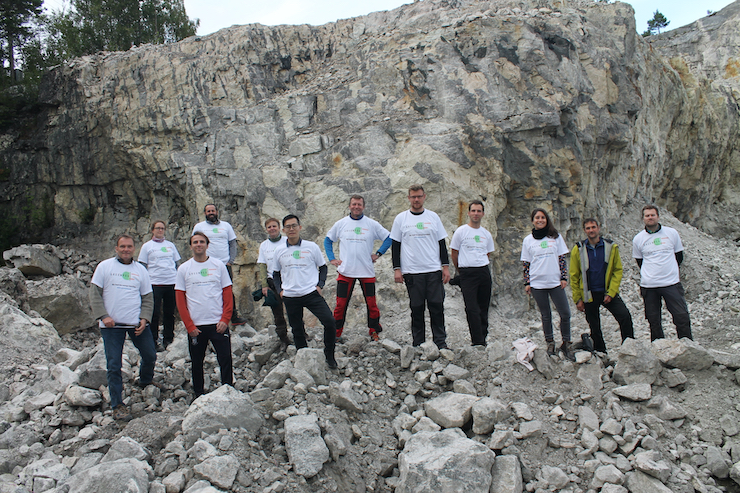GREENPEG is an innovation action project that aims at improving the exploration methods for pegmatites in Europe, source of critical raw materials that are used in the green energy industry, for example battery and solar panel production. The project consists of five academic and research institutions, technical consulting and mining companies, a geological survey, exploration services providers and a non-for-profit association. GREENPEG is coordinated by the Natural History Museum at the University of Oslo.
For more information and updates from the project, please visit the official webpage at:
greenpeg.eu
Why GREENPEG

Key raw materials required for the production and storage of renewable (green) energy
have to be imported over long distances to Europe and their secure supply is therefore a risk factor for the European economy. In addition, EU mining-related activities have dramatically declined in the last decades, and Europe has lost its global lead in exploration and mining expertise. One reason is the loss of know-how in exploration which has resulted in insufficient understanding of deep-seated mineral resources in the EU. Another reason for European mining decrease is the negative public environmental image of mining.
GREENPEG steps in by delivering the optimum combination of exploration methods to find buried pegmatite-type raw material deposits in Europe in the most environmentally and cost-efficient way. Mining domestic resources and performance of 'intelligent', more sustainable technologies will reduce emissions associated with exploration and transport of raw materials.
The new methodological approach and business plans of GREENPEG aim to help integrate new products and services into its associated businesses, attract investment into the European raw materials sector and support European companies performing the fundamental shift towards more sustainable technology and energy use to meet the ambitious 2030 energy and climate targets.
Why pegmatites?
The GREENPEG target raw materials, such as lithium, silica, rare earth elements, beryllium, tantalum, ceramic feldspar and cesium, are used in the manufacture of green energy devices (eg energy storage devices, photovoltaics, wind turbines, capacitors etc.). These raw materials being essential for green energy production are sourced from the rock type pegmatite. Pegmatites, very coarse-grained (with crystals larger then 3 cm) magmatic rocks, are commonly enriched in these commodities. Pegmatite deposits are abundant in Europe but are an underexplored resource type. Currently a few pegmatite mines for lithium and ceramic feldspar (Portugal, Finland) and for silica (Norway) exist in Europe, but there is huge potential to find more, in particular deep-seated deposits. GREENPEG will develop and deliver two innovative, competitive and environmental friendly exploration toolsets for the exploration of buried lithium-cesium-tantalum-enriched and niobium-yttrium-fluorine-enriched pegmatites.
How GREENPEG works

The scheme above illustrates the methodological GREENPEG approach. The testing, development and adjustment of exploration methodologies for buried, small-scale pegmatite ore bodies (pink) is performed at three scales: (1) Province-scale (500-1000 km²) comprising remote sensing technologies (work package 2); (2) district-scale (25-500 km²) comprising air-borne geophysics (work package 3); and (3) Prospect-scale (<25 km²) comprising drone-borne and ground-based geophysical and geochemical methods (work package 4). The new exploration toolsets are developed and validated in three active and representative European demonstration sites, leased by GREENPEG partners for pegmatite exploration: Wolfsberg in Austria, South Leinster in Ireland and Tysfjord in Norway. The selection spans the spectrum of challenges in exploration for European pegmatite deposits, such as variable wall rocks, dense vegetation, extreme topography, thick soil cover; features which will ensure that the delivered toolsets are robust and flexible enough to be applicable in manifold environments. The exploration tools validated at the three scales will finally be integrated into two toolsets adjusted to buried lithium-cesium-tantalum-enriched and niobium-yttrium-fluorine-enriched pegmatites.


